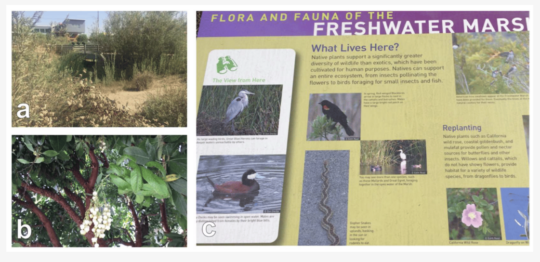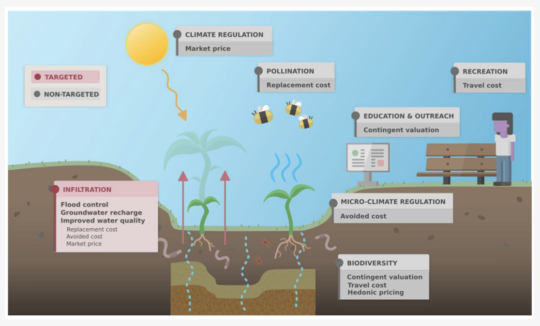Ecosystem Service-Based Strategies for Optimizing Natural Treatment of Stormwater in Southern California
Development and urbanization continue to transform coastal communities by replacing vegetation with impermeable surfaces that do not allow stormwater to percolate into the ground. This leads to decreased water infiltration, modified water flows, and introduced contaminants into the ocean. Flooding, traffic accidents, property damage, increased safety and health risks, and environmental damage can occur as a result. Green infrastructure and natural treatment systems are emerging as a supplementary stormwater management strategy. However, no one has ever quantified or placed economic value on the variety of ecosystem services provided by different types of natural treatment systems. USC Sea Grant funded research to analyze the ecosystem services (e.g. flood control, ground water recharge, improved water quality, biodiversity, pollination, climate regulation, recreation, outreach and education, aesthetics) provided by the natural treatment systems in Los Angeles. With this type of analysis, these systems could provide a unique opportunity for customization and optimization to maximize benefits for human well-being in urban settings, including localized flood control at the house or neighborhood level.
Key Results:
- Large database of data on ecosystem services provided by different types of natural treatment systems in Los Angeles, including bioretention systems, infiltrations systems, permeable pavements, dry ponds and wells, and treatment wetlands.
- Calculated economic value of these ecosystem services
Project Impacts & Application:
- Presentations of results at University of California Office of the President, Multicampus Research Programs and Initiatives meetings and the 2019 American Chemical Society National Meeting
- Data being made publicly available via an online database
Principal Investigator:
Lisa A. Levin, Ph.D., University of California, San Diego
Funding:
NOAA, 2016-2018
Additional Info and Publications:
- Le, J. T., Gonzalez, J. P., Carson, R. T., Ambrose, R. F., & Levin, L. A. (2023). Integrating Non-Targeted Ecosystem Services into Assessment of Natural Stormwater Treatment Systems. Water (Basel), 15(8), 1460-. https://doi.org/10.3390/w15081460
- Ge, B., Mehring, A. S., & Levin, L. A. (2019). Urbanization alters belowground invertebrate community structure in semi-arid regions: A comparison of lawns, biofilters and sage scrub. Landscape and Urban Planning, 192, 103664-. https://doi.org/10.1016/j.landurbplan.2019.103664
Access our Publications Database to view publications from this project or other related topics
Examples of biodiversity that can support ecosystem services in Los Angeles natural stormwater treatment systems: (a) plant diversity at the South Los Angeles Wetland Park, (b) Bicknell manzanita tree as a bee attractant, and (c) signage illustrating the biodiversity of the Ballona Freshwater Marsh.

Examples of Los Angeles systems designed to remove debris and contaminants from runoff: (a) biofilter along Elmer Avenue Paseo, (b) biofilter in the Avalon Green Alley, and (c) Filterra™ bioretention system on Grand Boulevard.

Diagram of targeted and non-targeted ecosystem services associated with natural stormwater treatment systems (a bioretention system pictured here) and methods used to assign a value to them.




